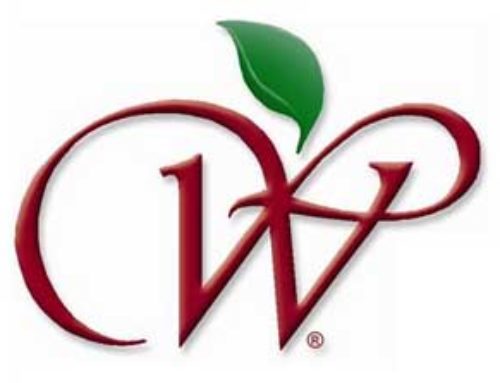The Canadian apple crop for 2015 is estimated at 14.3 million bushels, the second smallest in 20 years, according to Don Werden with the Norfolk Fruit Growers’ Association in Simcoe, Ontario.
It is 26 percent smaller than last year, Werden reported at the U.S. Apple Association’s crop outlook and marketing meeting in Chicago in August.
Ontario, suffering from two back-to-back frigid winters and a late freeze May 20, is projecting a crop of 3.9 million bushels, off 47 percent from last year.
Quebec’s crop is 5.9 million bushels, 1 percent bigger than last year’s. While Honeycrisp, Ambrosia, and Gala production is rising across Canada, Quebec’s crop is still 61 percent McIntosh. Across Canada, McIntosh makes up 36 percent of the crop.
Nova Scotia production is also down this year, 36 percent at 1.3 million bushels. Honeycrisp has caught up with Northern Spy, each contributing 22 percent to the number.
British Columbia’s crop is off 21 percent from last year, at 3.1 million bushels. Ambrosia now makes up 22 percent of the crop and Gala 44 percent.
Mexico
Mexico’s crop will be big this year. At an estimated 27 million boxes, it will nearly tie the 2013 record crop and greatly exceed last year’s crop, which came in at 16.6 million boxes. The report came from Leighton Romney with the Paquime Group in Chihuahua.
“Mexicans eat more apples every year, both from Mexico and the U.S.,” Romney said.
Very little of the Mexican crop goes into CA storage. Most of the fruit is sold by December, he said, so prices tend to firm up as U.S. apples come into the market. “U.S. apples get a better price,” he said, not just because of the sales season but even when both are competing on the same shelf.
Barriers to U.S. export sales this year include a stronger dollar, now exchanging 16 to one against the peso, and inflation in Mexico, both of which cut Mexican buying power. Low oil prices are adding to Mexico’s woes.
South America
World apple production is about 70.9 million metric tons, or 3.7 billion bushels, of which China contributes 54 percent. South America—Chile, Argentina, and Brazil—contribute a mere 4 percent to the world’s supply. But in the export arena, South America is a bigger player, said Rene Alarcon, a broker with the Döehler Group in Santiago, Chile.
South American growers had expected to benefit from the Russian embargo against fruit and vegetable imports from Europe, but that didn’t happen, he said.
Alarcon estimated production from the crop harvested this spring at 68 million bushels in Brazil, 38 million bushels in Argentina, and 78 million bushels in Chile, with exports from all three countries being down.
South American apple growers are affected by Chinese devaluation of the yuan, the falling value of the European euro, and persistent inflation, reducing the value of South American currencies.
Europe
“An apple a day keeps Putin away”—that was a slogan in Europe last year as the Europeans were encouraged to eat more apples since the Russian embargo ended sales to that country. The embargo was triggered by world reaction and sanctions affecting trade with Russia after its annexation of the Crimean region of Ukraine.
Philippe Binard with the World Apple and Pear Association in Brussels, Belgium, reported the estimated size of the European crop at 12.1 million metric tons, or 629 million bushels. This is smaller than last year’s record crop of 12.6 million metric tons. When the entire production of the European continent is totaled (including Russia and Turkey and others not in the Eurozone), he estimated production at 18.7 million metric tons, or 980 million bushels.
Increased local consumption, plus a weakened euro that depreciated 20 percent in value this year, boosted exports 18 percent, many going to non-traditional customers, Binard said.
Still, the Russian embargo on apples cost the European Union $7.5 billion euros as it paid compensation to growers who lost their Russian markets.
This year, Poland will again produce 30 percent of the European crop, 3.75 million metric tons, or 196.5 million bushels. Italy and France are next in production, with 2.3 and 1.6 million metric tons respectively.
China
Michael Choi, president of Zhonglu America, a wholly owned subsidiary of the Chinese Zhonglu fruit juice company, said that China will again set a new production record of 43.1 million metric tons, or 2.3 billion bushels, an increase from 41 million metric tons in 2014, the previous record.
The average Chinese person eats 30 kilograms of apples—66 pounds—a year, 88 percent in fresh form. China has 1.4 billion people, so most Chinese production is consumed at home—and the market for good apples is growing as wealth increases.
China’s export of apple juice concentrate fell 44 percent last year, pressured by increased supplies and lower prices in Europe. Big players in the apple juice market last year were Turkey, Poland, and Italy.
“China lost 100,000 metric tons of its apple juice concentrate market to Europe last season,” Choi said.
The new agreement between the United States and China to allow apples from the two countries to flow more freely seems to have benefitted U.S. apple growers more than Chinese, Choi said. The Chinese market for U.S. apples seems potentially more robust than the U.S. market for Chinese apples. •






Leave A Comment